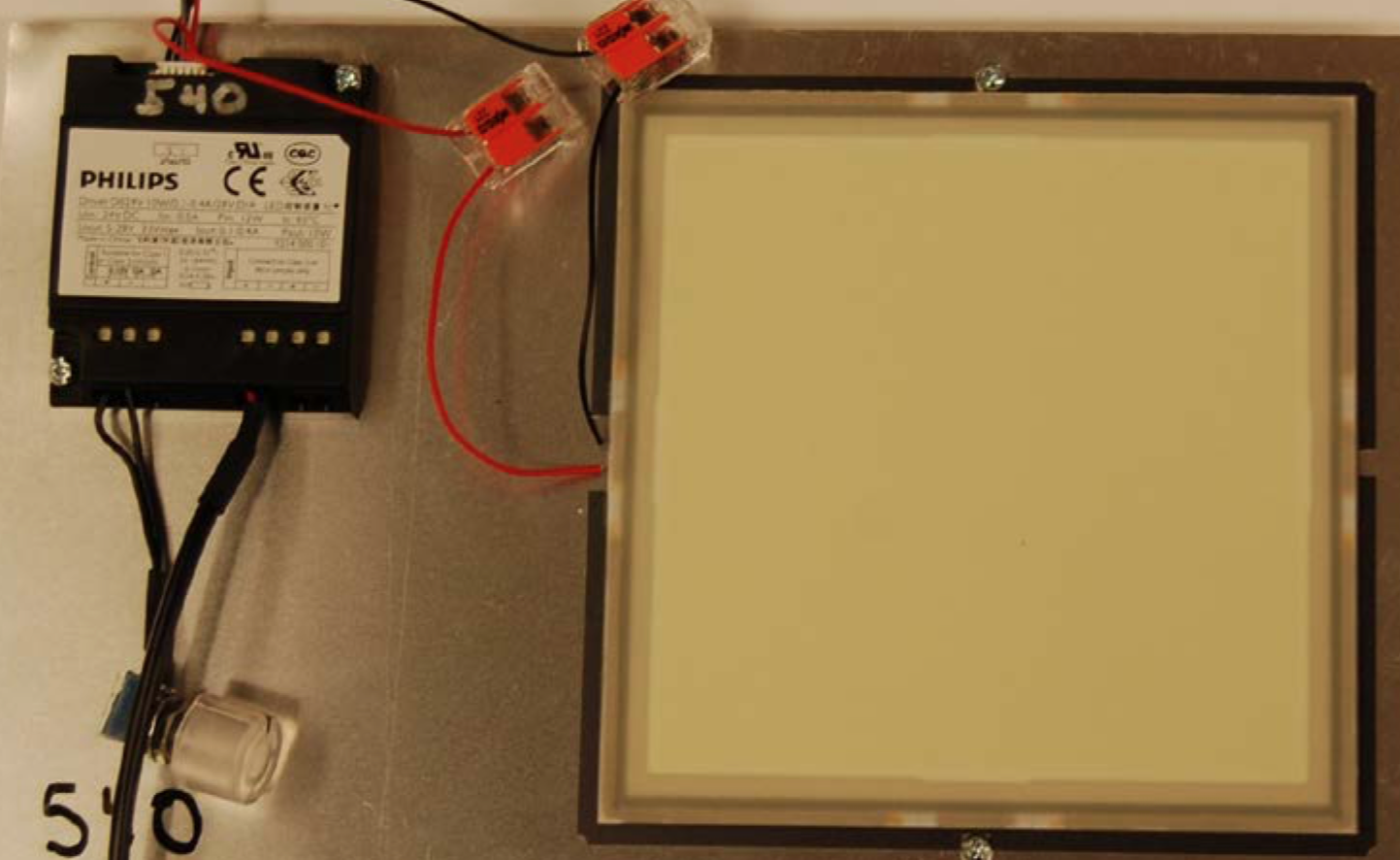The Department of Energy completed its second round of OLED testing, in an effort to create a comparison to LED lighting and to learn how OLED lights perform under “accelerated stress tests”.
The DoE says it tested the Chalina luminaire from Acutiy Brands and the Brite 2 and Brite Amber panels from OLEDWorks under temperatures between 95 and 115 degrees Fahrenheit and 90% relative humidity, with a goal of accelerating the aging process to see how they degrade.
The key findings are:
- The luminous flux maintenance of the current OLED products is improving but still remains lower than that of some inorganic light-emitting diodes (LEDs) using mid-power LED packages made during the 2011 timeframe.
- Improvements in the thermal management of OLED panels tended to produce gains in the luminous flux and the chromaticity maintenance of the panels.
- Differential loss of light emission from the blue, green, and red light-emitting molecules that compose the OLEDs produced chromaticity shifts that were significant in early products but have improved in later products that use more stable materials and have better thermal management.
- A steady increase in power provided by the driver was measured in most cases. A concomitant decrease in efficiency also occurred.
- Abrupt failure of OLED panels generally occurs through a shorting mechanism that may be caused by the formation and growth of organic particles. The tendency for panels to fail abruptly is reduced in later products, and abrupt failures are less likely, but dark spots still tend to occur over time.
- Mildly accelerated conditions were found to provide meaningful acceleration of OLED failure modes and can reproduce field failures in greatly reduced time periods. Luminous flux degradation in such testing can be modeled by using standing lighting industry methods such as a single-exponential decay function after an initial period.
The Department of Energy did add that the test showed the performance of OLED products continues to improve, and steady gains are being made in OLED technologies.
You can read the entire DoE report on it’s website or by clicking here.
